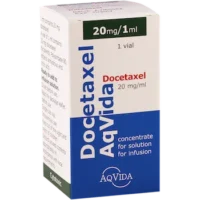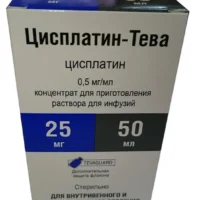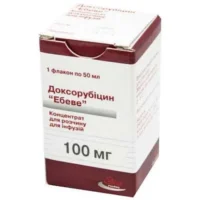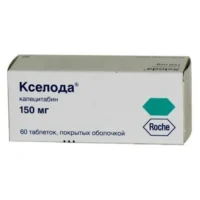Description
Fluorouracil (fluorouracil) solution for injections 50 mg/ml. 20 ml. (1000 mg.) №1
Ingredients:
Each ml contains 50 mg of Fluorouracil.
Dosage:
The dosage is determined by the healthcare provider based on individual factors such as the condition being treated, weight, and overall health. It is typically administered intravenously under medical supervision.
Indications:
Fluorouracil is commonly used in the treatment of various cancers, including colorectal, breast, and skin cancers. It works by interfering with the growth of cancer cells, ultimately leading to their destruction.
Contraindications:
Do not use Fluorouracil if you are allergic to it or have a dihydropyrimidine dehydrogenase (DPD) enzyme deficiency. It is important to inform your healthcare provider about any medical conditions or medications you are taking before starting treatment.
Directions:
Follow the instructions provided by your healthcare provider carefully. The solution is typically administered slowly into a vein over a specific period. It is crucial to adhere to the recommended dosage and schedule for the best results.
Scientific Evidence:
Fluorouracil has been extensively studied and has shown significant efficacy in the treatment of various types of cancers. Research published in the Journal of Clinical Oncology has demonstrated the effectiveness of Fluorouracil in improving survival rates and reducing tumor size in patients with advanced colorectal cancer.
Additional Information:
Fluorouracil is a pyrimidine analog that exerts its cytotoxic effects by disrupting DNA synthesis in rapidly dividing cells. This mechanism makes it particularly effective against cancer cells that have a high rate of proliferation. Clinical trials have also shown Fluorouracil to be well-tolerated with manageable side effects when used as directed.
Overall, Fluorouracil solution for injections is a vital component in the treatment of various cancers and continues to be a cornerstone in chemotherapy regimens. Its proven efficacy, coupled with ongoing research efforts, highlights its importance in improving patient outcomes and quality of life.





